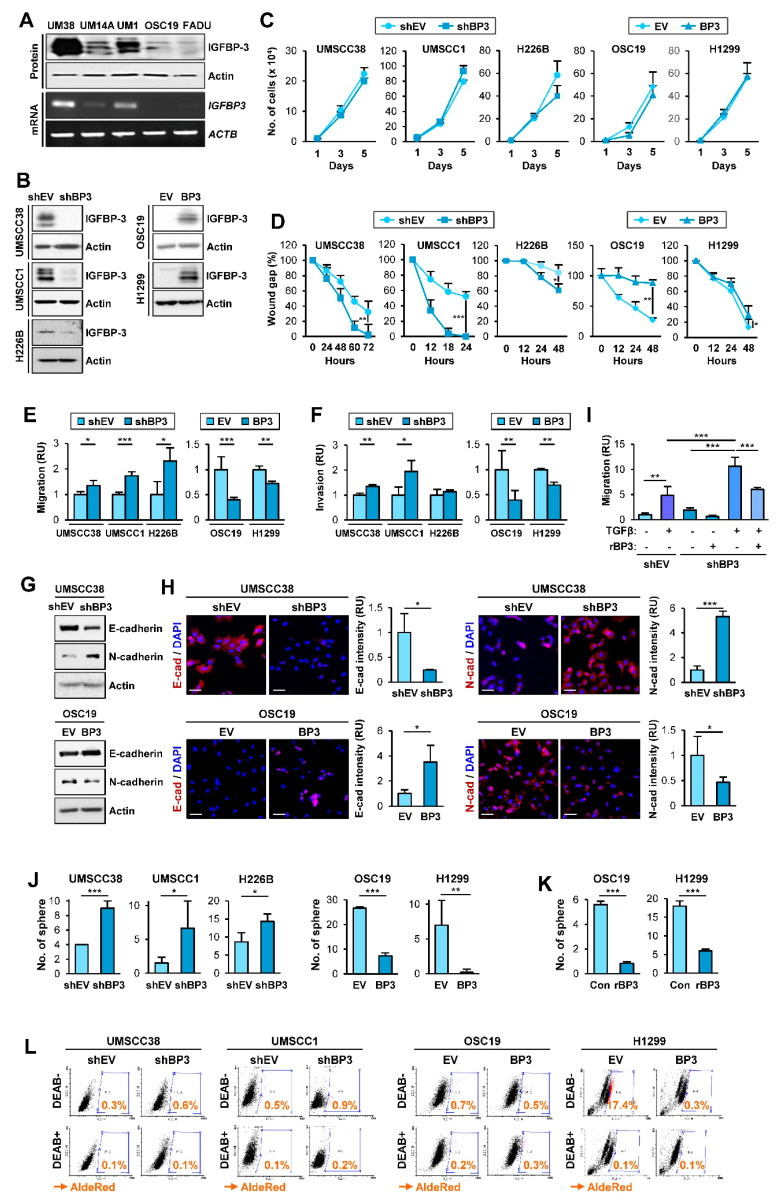Figure 1.
IGFBP-3 inhibits the acquisition of EMT and CSC-like phenotypes in HNSCC and NSCLC cells. (A,B) Western blot (WB) (A,B) and RT-PCR (A) analyses of IGFBP-3 expression in the indicated HNSCC cell lines (A) and HNSCC and NSCLC cell lines wherein IGFBP-3 expression was either silenced of enforced by stable transfection with shRNA or expression vector (B). (C) Effect of IGFBP-3 on cell proliferation was accessed by cell counting assay. (D–F) Effects of IGFBP-3 expression on the migration and invasion of the indicated cancer cells evaluated by a scratch assay (D) and by the Transwell migration (E) and invasion (F) assays. (G,H) WB (G) and IF (H) analyses for the protein expression of E-cadherin and N-cadherin in the indicated cancer cells with manipulation of IGFBP-3 expression. Quantification of the fluorescence intensity was analyzed by ImageJ software (H). Scale bars: 50 μm (H). (I) UMSCC38-shEV and UMSCC38-shBP3 cells unstimulated or stimulated with TGF-β (10 ng/mL) in the absence or presence of recombinant IGFBP-3 (10 μg/mL) for 48 h were subjected to the Transwell migration assay (J–L) Regulation of sphere formation (J,K) and ALDH activity (L) by manipulation of IGFBP-3 expression (J,L) or treatment with recombinant IGFBP-3 protein (K). The bar represents mean ± SD. * p < 0.05, ** p < 0.01, and *** p < 0.001, as determined by the two-tailed Student’s t-test compared with the corresponding control (C–F,H,J,K) and one-way ANOVA followed by Dunnett’s post-hoc test (I). UM38: UMSCC38; UM14A: UMSCC14A; UM1: UMSCC1; OSC19: OSC19-Luc. EV: empty vector; BP3: IGFBP-3.

